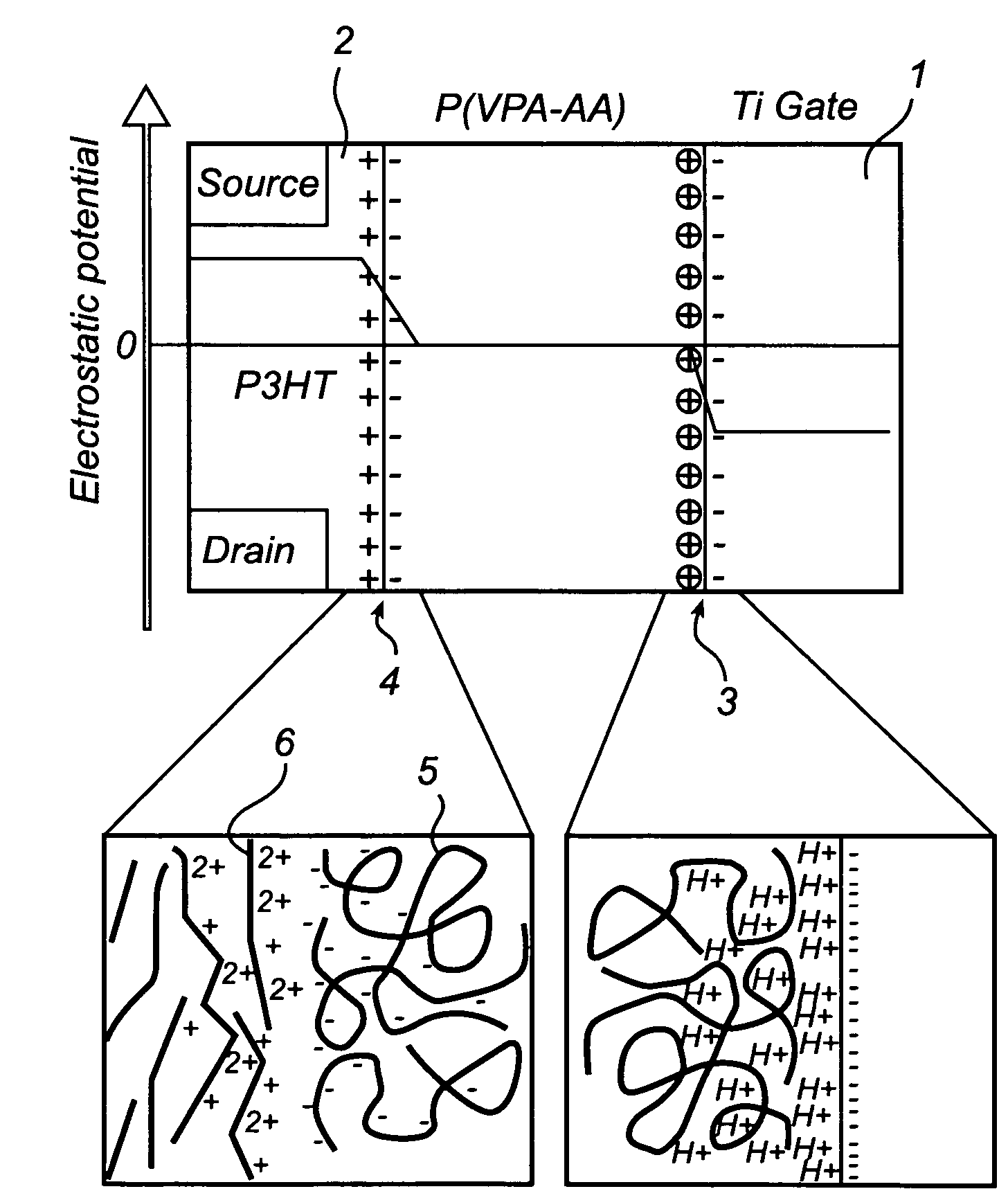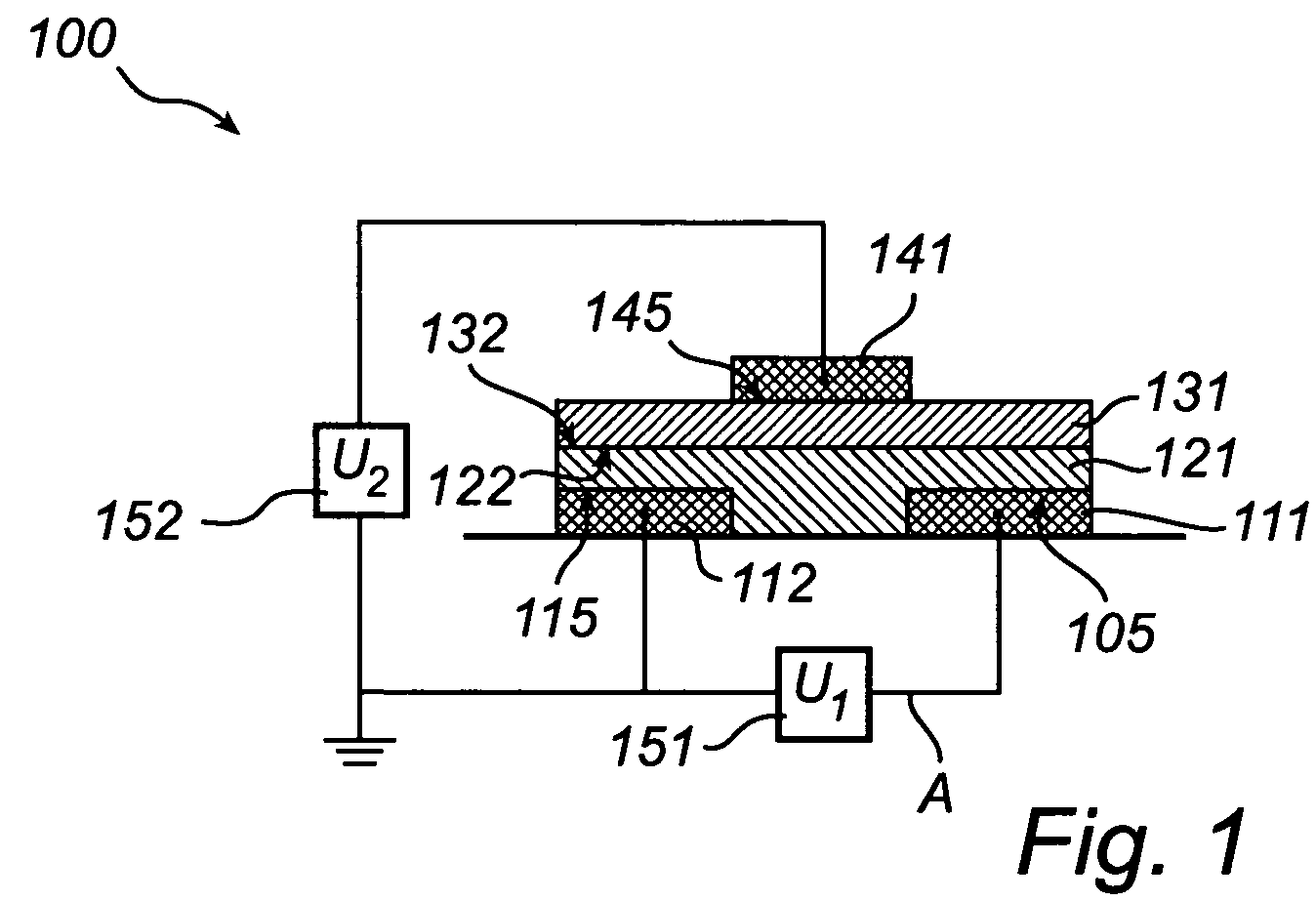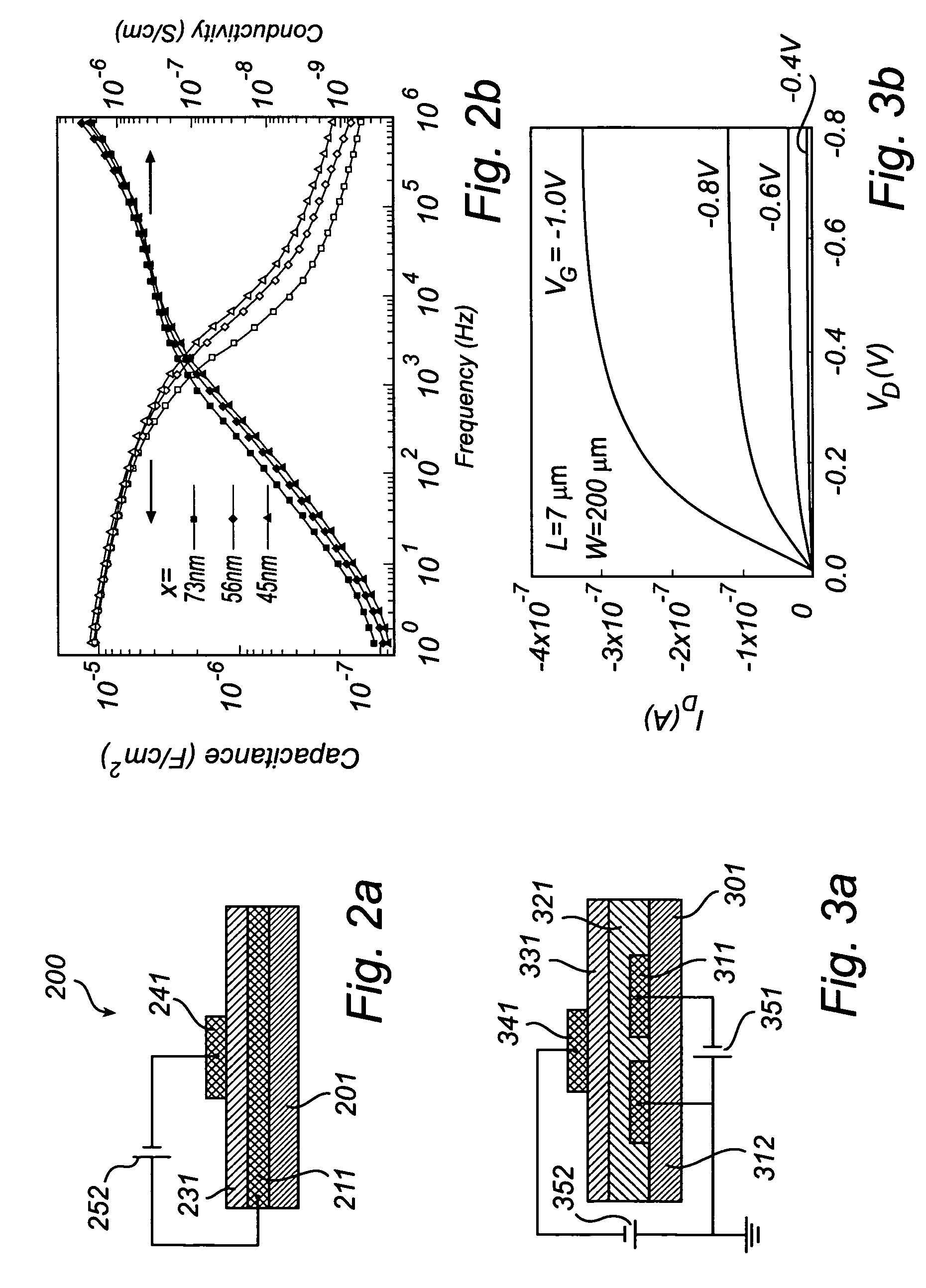Transistor with large ion-complexes in electrolyte layer
a transistor and electrolyte layer technology, applied in the field of field-effect transistors, can solve the problems of sacrificing ease-of-manufacturing for low-voltage operation, and achieve the effects of reducing the on/off current ratio of the transistor, avoiding large leakage current, and enlarge the curren
- Summary
- Abstract
- Description
- Claims
- Application Information
AI Technical Summary
Benefits of technology
Problems solved by technology
Method used
Image
Examples
second embodiment
[0076]According to the electrolyte model, a polymer transistor gated via a polyanion electrolyte normally do not depend significantly on the thickness of the “dielectric” layer, nor on the position of the gate electrode. FIG. 4a schematically illustrates the invention, equal to the embodiment described in relation to FIGS. 1 and 3a, except that the gate electrode (441b) is laterally displaced a distance D from the position illustrated in FIGS. 1 and 3a, respectively. The distance between the channel and the gate electrode was varied between 1.25 and 10 mm. In other words, instead of using the designated gate electrode (441a) positioned on top of the channel, the gate electrodes of neighbouring transistor structures was used, i.e. the conventional source and drain electrodes (411;412) together with the neighbouring gate electrode (441b). The (I-V) relationship of the transistor illustrated in FIG. 4a is described in FIG. 4b. Although the channel current level is smaller, due to a pot...
third embodiment
[0077] schematically illustrated by FIG. 5a, a much thicker P(VPA-AA) layer (531) is cast from a drop on P3HT (521). More specifically, a drop of concentrated P(VPA-AA) solution is deposited on top of the channel and let for 10 min at 110° C. This results in a hemispherically shaped gate insulator (531). A metal wire, contacted to the polyelectrolyte, is used as a gate electrode. The transistor behavior is similar to those of the transistors illustrated in the previous figures, although high leakage currents were recorded at VG=0 V.
fifth embodiment
[0078]In the invention another class of polyelectrolyte materials, poly(styrene sulfonate) (PSS), has also been tested. PSS was spin coated on top of P3HT giving a thickness of about 100 mm. A Titanium gate electrode was prepared using the same method as for the above described transistors. A schematic cross section of the device is shown in FIG. 6a. Actually, two different PSS-based polymers have been tested: poly(styrene-4-sulfonic acid) (PSSH) and poly(sodium 4-styrenesulfonate) (PSSNa). The latter polymer is the sodium salt of the first polymer. In PSSNa it is probably mainly Na+-ions, instead of protons that migrate through the polyelectrolyte film towards the gate electrode when a negative gate potential is applied. As a consequence, PSSNa-based transistors are slower than PSSH-based. FIG. 7a is a diagram showing ID vs. VD for a P3HT transistor with an about 100 nm thick PSSNa gate insulator, measured in humid air (relative humidity ˜40%) at room temperature. FIG. 7b illustrat...
PUM
 Login to View More
Login to View More Abstract
Description
Claims
Application Information
 Login to View More
Login to View More - R&D
- Intellectual Property
- Life Sciences
- Materials
- Tech Scout
- Unparalleled Data Quality
- Higher Quality Content
- 60% Fewer Hallucinations
Browse by: Latest US Patents, China's latest patents, Technical Efficacy Thesaurus, Application Domain, Technology Topic, Popular Technical Reports.
© 2025 PatSnap. All rights reserved.Legal|Privacy policy|Modern Slavery Act Transparency Statement|Sitemap|About US| Contact US: help@patsnap.com



